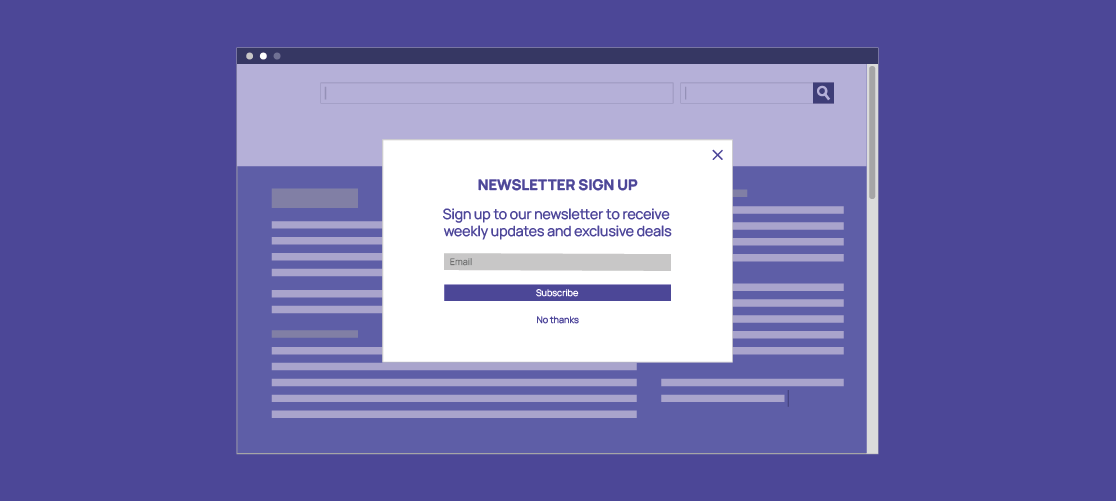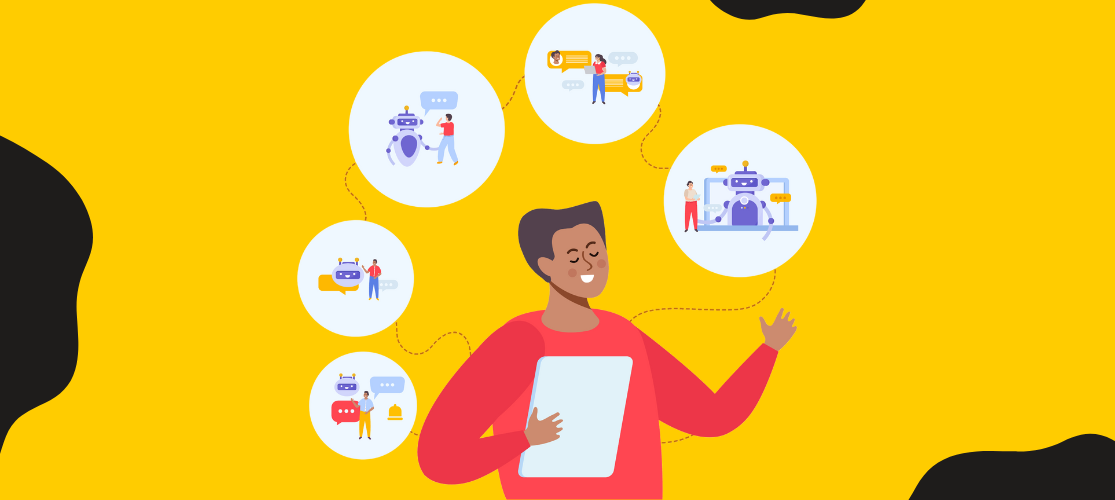You could have the most beautiful website on the planet, built by the best web designers known to mankind. But if it’s not converting traffic into leads or customers (or just not achieving the goals you set up the website to achieve) then it doesn’t matter how pretty or how technically advanced it is.
It’s vital that at the end of the day, your website converts. But for this, you will need to have a clear vision of what you want your website to do (like sell products or gather leads) and then understand why you’re not converting users.
Once you’ve understood why you’re not converting your website visitors, you can then work on building a strategy that focuses on optimising your conversion rate.
What is Conversion Rate Optimisation?
Conversion Rate Optimisation (CRO), is the process of increasing your website’s conversion rate. The goal here is not about increasing traffic or visitors to the site, but to convert those who come onto your website.
Successfully increasing conversions will see an increase in sales. But remember that CRO is not a quick fix, but rather a continually evolving process that requires consistent testing to push forward more and more improvements over time.
Why CRO is so important
What’s better, 100 people visiting your website each month and 1 person converting, or 10,000 people visiting your website and 10 people converting? Now you may think that 10 is higher than 1, and you would be correct. However, as a percentage, it is 1% vs 0.1%. That’s right, all those people on your website and you’re only converting 0.1% of them.
So you have done all that work, and probably spent a lot of money and time driving people to your website. And for what? Very little!
Yes, having more people on your website will naturally bring more leads or sales. However, by just improving the conversion rate of the second example to 0.5% (still less than the first example) you will bring in 40 more conversions. And more conversions means more sales.
So how do you go about making a website that converts?
13 proven ways to improve your website conversion rate
Whether you’re a new business, still trying to find your footing or a seasoned business in need of a refresher, let’s shine some light on how you can work on driving those conversions to their final destination and beyond.
1. Start with your goal(s)
You can’t convert without a goal. Your website needs a purpose – what is it exactly you want your visitor to do when they discover you? What goal do you have in mind for them? Sign up for something? Purchase a product? Get in touch to enquire further? If there isn’t a goal defined, how will you know if your conversions are working and how to measure them?
2. Research your competitors
If you can understand your competitors, you’ll better understand your position in your industry/market. Some competitor research will help you to determine how you stand out from the crowd and what makes your business more compelling than your contenders. It’s likely that your website visitors will be sizing you up against other similar businesses so by understanding who it is that your visitors will be looking at, you can then highlight what it is that makes you different (and potentially better).
3. Define your value proposition
Your value proposition should communicate to your customers why they should do business with you. It should tell them what benefits they receive when purchasing your product or service. Research your target audience. Get a good picture of what the average member of your audience is, what is their persona, their character and their biggest challenges. If you can address their pain points within your value proposition, then you’re onto a winner – and by that, we mean a conversion!
4. Consider your conversion funnel
The conversion funnel is one of those brilliant tools that marketers and sales folk alike love to use. It helps visualise the different stages that your customers will go through during their journey on your website and or/interacting with your brand, from start to finish. In order to work on increasing your conversion rates, you need to be able to pinpoint where your customers are getting stuck, losing interest or confidence.
Maybe they tag out during the interest stages because you wrote a blog on something they wanted to know but kept cramming links to ‘BUY NOW’ all over it? By identifying where you’re losing your visitors, you can work on creating a strategy that focuses on making the conversion process more gentle and nurturing for them.

5. Analyse the analytics
Don’t know what your visitors are doing on your website or how they’re interacting with it? That’s a problem. If you can analyse user behaviour across your website, it’ll paint a bit of a clearer picture of what is working and what isn’t. Is the bounce rate on your landing page particularly high? That needs some looking into and improving. A heatmap will also help you to understand your visitor’s behaviour flow as well as identify any aspects of your site that serve little to no purpose.
6. Limit navigational hurdles
Your visitor’s experience on your website should be smooth, seamless and pleasing. Don’t bombard them with more popups than necessary or links that link to more links and even more links. The most important aspects of your site should be easy to navigate and shouldn’t have to make your audience face hurdles that are too far away or worse yet, one’s that are overabundant and way too close to one another.
7. Keep forms short and sweet
Forms are so important on your website, so you absolutely need one. A form is a gateway that brings the leads in. A short, snappy and minimal-effort form is more appealing to your audience than a really really long one. Hardly anyone is coming to your website to sit and fill out a form that feels like filling out a tax return. Use only the necessary fields for the data you need from your visitor.
8. Communicate benefits with CTAs
Standardised calls to action are ok and they do help with conversions, but usually only if your customer has already decided they will come to you specifically. If a new lead is discovering your website for the first time or dabbling with the thought of pursuing your services/buying your product, a unique, personalised, benefits-highlighted CTA will help tip the scales and get them converting.
9. Present the evidence
You can talk the talk but can you walk the walk? In order to build your audience’s trust and reassure them that you are as good as you say you are, you need to have some evidence to back these claims up. By displaying that you can do what you do well, they will feel confident in your business and press that button or get in touch. Include testimonials from past customers, case studies showing how you helped someone, certifications, accreditations, logos of clients you’ve worked with
10. Create quality content
Creating high-quality content that fits with what your audience wants is key to converting them. Content that engages and provides value to your customer is ultimately what will convert them. If the content doesn’t align with what they’re looking for, they won’t be interested – it really is that simple. Remember that not everyone is your target audience so you can’t try to make content that works for everyone, you need to focus on your intended audience. How do you know how to tailor your content to your audience though? A superb thing called SEO content does the trick pretty well.
11. Keep your site healthy
If you look after your website, the leads will pour in, A website that caters for user experience by working on responsiveness, page loading speeds, and mobile-friendliness will always champion one that doesn’t. A well-looked-after website lets your customers know that you care and that you mean business. If they can feel the efforts that have been put into creating a first-class experience, they will be more likely to convert than not.
12. Build an email listing with pop-ups
Ok, so your website visitors may not be ready to make a purchase right this second. That’s fine. But if you offer them the chance to sign up for emails/newsletters, they can come back to you when they are ready. Setting up some type of incentive such as a popup to sign up for your email listing gives you the opportunity to keep in touch with your audience and inform them of business updates or news, whilst keeping you in their minds in the process.
You could also work on campaigns that may help to bring a customer back who may have left your website during a step in the conversion funnel. Perhaps they left during the checkout phase – you can build an abandoned cart email to remind them of where they left off.

13. A/B testing
You won’t have all the answers and you’re not expected to just instantly know what works best and what doesn’t. A/B testing (or split testing) is a great way to do some digging into what your customers prefer. It involves creating and comparing two of the same elements that are made differently to see which works best for your customers. It can be as simple as trialling two different service page headlines or something more large-scale as split testing two email styles for the same campaign.
Anything else?
Of course. There are lots of ways you can help your website to convert better, such as:
- Live chats
- Multimedia – images, videos, infographics
- No jargon
- Solid design and brand consistency
- Powerful headlines
- Remarketing
Plus, did you know that videos about your products can increase purchases of said product by 144%. Even a small 1-second delay in your site speed can result in a 7% reduction in conversions. (Source: Neil Patel).
So if I do all those things my website will convert users to customers?
Unfortunately no. It takes time and effort to create a website that has a high conversion rate. We really want to emphasise that it’s a full-scale operation to create a website that converts and it does take time. A brilliant, high-converting website is very much like a fine wine, it gets better with time. (Although, unlike with wine, you do need to be actively working on it rather than just leaving it). A/B testing is key!
Want support with making your website a conversion capital? Our team of website wizards, marketing maestros and dexterous designers are all here to help out. Get in touch to learn more.



